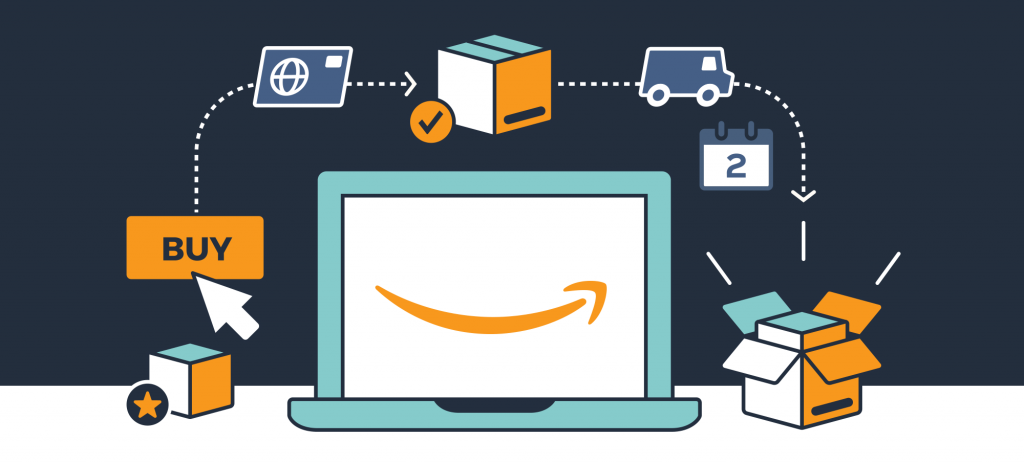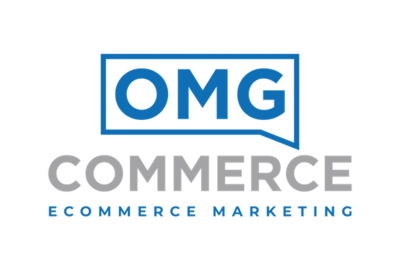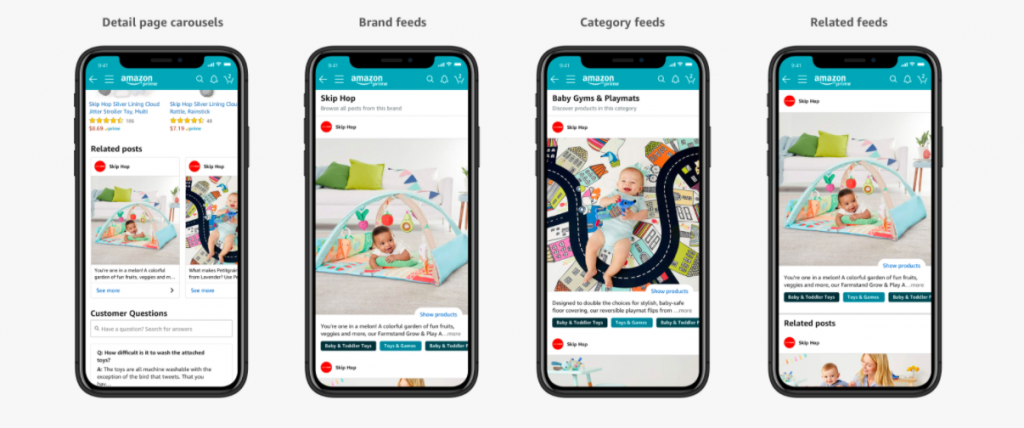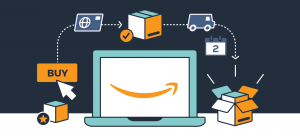
2023 Top Amazon Do’s and Don’ts – Chris Brewer
by Chris Brewer, OMG Commerce

Do This On Amazon in 2023!
In researching a product for a launch, we hear: “Such & such products are low quality and very cheaply made, but it’s selling tons on Amazon. My extremely high-quality version should be able to sell tons! Especially since Amazon is so ‘hot’ right now”…..
This might be true, BUT… but Amazon is flush with millions of products, and if a category is already swamped with numerous competitors it is going to be extremely hard to get the message across to the shoppers that your product value is worth 2x-3x-4x-etc the cheapos:
Do as much pre-launch and ongoing product research as possible. OMG is a paid subscriber to Helium10 for this. Check it out here for a free trial. You can also find a 50% off coupon code there as well.
Amazon is a jungle. Shoppers are on the hunt for a quick fix to a “problem” they have. A lot will have sticker shock, and not bother clicking. Many may glance at the product page, but not glean enough information in order to justify the price.
If you have to explain your product’s value due to cheaper alternatives, you have to do itvery quickly, and Amazon does not give a lot of ways to do that – especially in advertising. The best advertising message you can give is in Sponsored Brand ads ,and you only get 50 characters, with lots of limitations on what you can say. Can you convey your entire brand message & worth in 50 characters? (or, can you justify the higher price)
From a 1P Perspective:
List AMZ exclusive (meaningfully differentiated) assortment to mitigate the risk of pricematch/margin compression and be mindful of discount depth/unit limits on high Average Sales Price items to minimize the risk of 3P arbitrage
Ensure your product has the right to win on Amazon. It’s an expensive launch with competitors who might not care about margin or publicly traded companies with celebrity endorsements. Having a solid plan for entering and maintaining your space in the marketplace is crucial.
- Optimize organic data 100%
- Use reports and data for iterations
- Leverage A+ / PPC / Ads (if a Brand)
- Stay militantly on top of customer service A-Z claims/questions
- Stay militantly on top of Seller performance KPI’s
- Have a strategy – Don’t fight (Brands) resellers for example unless the goal is to take the channel over.
- Check profit per SKU, not GMV (Gross Margin Value)
High-Level Amazon Advertising Do’s for 2023
1. Organize your advertising
-
- Create and name campaigns around how you see your company (Parent ASINs, Child ASINs, Product Lines, etc.)
- Create and use Portfolios to organize your campaigns
- Create a Chronicle for your account for easy reference (Table that shows
Portfolio, Parent ASIN, Best Performing Child ASIN, SKU, Description and Default Ad Copy). Here’s an example from the OMG team.
2. Define your top goals for Amazon advertising at least once per quarter (Grow market share, achieve rank 1, improve ACoS efficiency, reduce spending, etc.)
3. Define (and redefine) the KPIs you are going to evaluate if you’ve achieved your goals (what ACoS, Spend, Sales, Impressions, CTR, are successful for each of
your goals/products?)
4. Make data-driven decisions
5. Let Amazon do some of the heavy lifting for you.
-
- Use Auto, Suggested ASINs, Suggested, Categories, Suggested bids to find converting keywords and ASINs via your reports and bid on each by
the data
- Use Auto, Suggested ASINs, Suggested, Categories, Suggested bids to find converting keywords and ASINs via your reports and bid on each by
Expert Amazon Advertising Advice from OMG Specialists
Test all targeting options available to you (Amazon adds new ones seemingly every
other month), and test them with every single product in your line up.
Ex: In my experience, Sponsored Product targeting campaigns targeting Amazon’s “suggested” ASINs do not perform very well. They either end up spending inefficiently, or they get little to no impressions at all. This may lead you to conclude that Amazon’s ‘suggestions’ are bad ideas. Amazon recently brought the product targeting feature to Display ads within Seller Central, which includes the option to target Amazon’s suggested list of ASINs. Targeting this suggested ASIN list has FAR AND AWAY surpassed the total sales & efficiency of all other forms of Display ad targeting for the majority of our clients.
Have you tried Amazon Posts?
It’s a beta. Contact OMG or your Amazon representative for access. If you have been using Posts, did you know that Amazon has been rolling out updated features for Posts?
Posts are currently free to use. Sure, they don’t offer any sales attribution, but they’re
advertising space that if you’re not a part of, your competitors are owning 100% of that real estate.
Do test all new features” BUT be careful!!
Amazon has a lot of different levers you can pull. You can’t (for instance) set the bidding strategy to “Bid up & down” on just a few campaigns, and optimize it the exact same way you optimize all other campaigns that are ‘Bid down only’ or ‘Fixed Bid’. The same goes for Placement Adjustments.
If you’ve set a unique adjuster, stay on top of it. It may run smoothly for a week, a month, a year, or forever, but it may also lull you into complacency, and then it starts delivering days of huge ad spend and horribly low sales. Yikes!
Be Historical
Metrics fluctuate day by day. Amazon’s ad attribution runs on a 14-day lookback
window. Amazon’s ad attribution over the most recent 3 days? It’s horrendous.
Sometimes they’re on point, but most days (Especially right now during this crazy Covid Market) the data (ACoS in particular) is astronomically off.
Pay attention to every single day, but don’t make sweeping bid cuts (or ask your ad manager or agency to do that) because the past 3 days ACoS look horrendous. If your ad spends spiked in tandem with the ACoS, then review to ensure nothing is truly amiss, like a bid that was supposed to be $1.30 but was accidentally entered as $13.00.
In the cycle of your optimizations, what window of data do you look at? 7-day? 14-day? 30-day? 60-day? Year to date? Lifetime?… Look at all of it.
There’s no need to inspect so deeply every day, or even every week, but you should be inspecting historical data over differing lengths of time. The shorter the window, the more frequent you’ll be checking it. 7/14/30 day inspections should happen at least once a week. (I don’t mean going into every single campaign at that level, but reviewing the account as a whole. Are there any standout data points? How did the past 7 compare to the 7 before that? Same for the past 14?) If you see something glaring, act on it. If things look smooth, then general optimizations should be fine.
Remember to review Year to date (if it’s April or later), and Lifetime. These can be
extremely helpful to catch 2 things (at least):
Long term spenders with no sales, that have been spending lightly for super long periods of time, and never paused and long term great performers, that may have been bid down upon recently due to a short window of poor performance. These terms may be critical to maintaining competitiveness, and brandawareness.
Use Sponsored Brand Video!
What results can you expect? Here is 3 months of data for 10 different clients in
various categories at OMG Commerce:
- Video ACoS is 22% better than overall account ACoS
- SB Video on average is 3.22% of total ad spend
- Avg CTR Lifestyle Videos: 1.49%
- Avg CTR Template Videos: 0.83%
- Video CTR is 62% higher than account CTR
This is a great resource if you’re planning on starting Sponsored Brand Video.
Betas TEST as many Beta’s as you can. Test and test again. Amazon, like all platforms, put out tools that might not be great at the start but can develop into something that works very efficiently.
Third-Party Insights
It’s not uncommon to be offered a third party revue of your ad account. Even if you think your performance is great and you or your in-house team or your agency is going a great job, take advantage of offers to give you an independent review of your account. You might not switch over to their service or software, but you will likely find out things that you didn’t know before. This can be highly beneficial. For instance, OMG Commerce offers a free account review from the director of the department. Look for reviews that give a solid value proposition. For instance, “we believe we can pay for ourselves within a certain time frame.” You can request your free Amazon account review here.
Advertising Insights Summary
- Amazon is constantly updating
- Don’t be complacent (you might be missing something)
- Don’t burn bridges of targeting types that didn’t work
- Do test all new features available (grow what works – temper what
doesn’t, but keep watching it and coming back to it as it adapts)
Amazon Terms of Service
Comply with Amazon Terms of Service. As tempting as it may be to color outside of the lines, the risks and hassle of dealing with policy violations don’t outweigh the potential benefits. Slowly but surely, Amazon has been making changes over past years to favor honest, compliant sellers. Stay the course and pursue above-board strategies that will yield comparable results for long term success.
Amazon Updates & Changes
Pay attention to Amazon newsletters and invites, as well as, the Amazon dashboard itself. Amazon has a habit of implementing new changes under the radar or with minimal notice. In just the past month (August 2023), if you weren’t paying attention, you may have missed your IPI score falling into the red overnight when the threshold changed to 500 from 400. Things like this can have a major impact on your day to day operations so it’s important to keep an eye out for these big changes.
Don’t Do This On Amazon in 2023!
Don’t list low ASP (average sales price) assortment(s) as that will erode your overall net profit margin.
Amazon is no place to loosely put products up and hope for organic sales. Can it
happen? Yes! But to really make a splash and understand the true potential, giving your listing and launch all your efforts can give the best results. If you don’t put products in the right way, you could do more harm than good.
Don’t assume this is an overnight success. This takes time. Sometimes lots of it.
Don’t try to operate the same as on your website. Orders, Customer Service, stock
accuracy… it all needs to be far tighter.
Don’t argue with Amazon on a policy point. It wastes time! They won’t change their policy for your situation.
Don’t break policy rules – this is never worth the long term risk for the short term payout.
Don’t rush into listings, FBA orders, or marketing. Seek advice and/or do your
homework. A big early mistake can cost you months over.
Expert Don’t Do This With Your Ads From OMG Specialists
Don’t think that you have all the bases covered, or that you’ve tested a targeting
variation that didn’t work in the past so it will never work.
Don’t expect easy wins.
Don’t make all adjustments based on short windows of data, this can be destructive.
Don’t stop learning; we should always experiment, read, and improve our craft. Amazon advertising is too dynamic to rest on only your knowledge.
Don’t ignore your competitors. Keep an eye on what they are doing and what keywords they are showing for.
Don’t make most of your decisions from your gut. Do it sometimes, but observe what you do, find what works, keep improving on that process.
Don’t be scared to make mistakes. Ruth Simmons has said, “Learning is the antithesis of comfort,” if you’re not messing up you’re not trying hard enough.
Don’t be reactive when it comes to listing and ad optimization. Amazon is notorious for delayed reporting and Amazon’s algorithm that determines organic search ranking and ad placement is sensitive. As much as we all want to monitor up to the minute stats as business owners, one of the most damaging things you can do on Amazon is obsessing over inaccurate data and making wide-sweeping listing or ad changes based on this. As a rule of thumb, when making any major strategic marketing decisions in regards to Amazon, review at least 14 days of data excluding the past 72 hours.
Don’t coast. Don’t assume if you’ve been a beneficiary of high sales increases in the 2020 Covid era that high sales will last forever. Ecommerce has grown tremendously in the past several months, and Amazon is slaying it. Strong sales should stay, but there are a myriad of variables as we go into the rest of the year, and next that means we might see fluctuations (election/covid in winter/amazon shipping capabilities/etc..). The main point is don’t coast because sales are high now, they are for almost everyone online. Continue to stay focused on the fundamentals.
Amazon Support
Don’t take “No” for an answer. Ultimately, success on Amazon can boil down to your persistence when it comes to correcting an issue that is impacting sales. When it comes to Amazon Seller Support, the squeaky wheel gets the grease, so if a case is marked closed without a satisfactory resolution, don’t be afraid to reopen it. With support currently experiencing high call volumes, it’s important now, more than ever to be assertive when it comes to your account and listing health.
Amazon Betas
Don’t miss out on early access betas. The Amazon platform is an increasingly
competitive marketplace and any competitive advantage you can acquire, you should. If you hear about a new program and don’t have access, don’t hesitate to reach out to your account manager to request access. If you’re not ahead of the curve on Amazon, you’re already behind. Are you using Amazon Posts? How about the new multi-product tagging feature, post scheduling, and advanced reporting that just got added to this beta? It’s important to stay on top of these changes.


Do you have a winning Amazon Do or Don’t? Contact Us and we’ll continue to keep this resource updated with does and don’ts to help our stores grow with strong profits and sales!
About The Author
Chris Brewer is the co-founder of OMG Commerce. His company has risen to a level that less than 3%of all Google Partner agencies worldwide attain, which is the rank of Premier Partner. His company delivers online and offline marketing expertise, advice and education to eCommerce businesses and brands worldwide. Chris has a history of building 7-figure businesses. In addition to the incredible growth and success with “OMG,” his entrepreneurial accomplishments have included an outdoor advertising firm and publishing company. Chris regularly coaches entrepreneurs and small business leaders on business growth, sales and marketing. He is the author of the book, Does Your Marketing Make You Money: 7 Quick & Easy Secrets to Create A Booming Business Now and resides just outside Springfield, Missouri with his wife of nearly 25 years. They have two adult children, Brooks 19 and Sivana 22.
Recent Posts
Sign up for our Newsletter
Get notified with new podcast episodes every week! Plus, actionable and practical eCommerce tips straight to your inbox.
No spam. Unsubscribe anytime.






